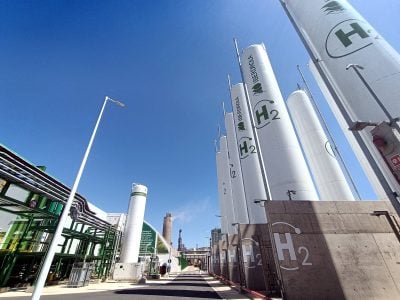Nairobi, the capital of Kenya and perhaps the most important commercial and administrative hub in Eastern Africa, has been one of the most frustrating cities to get around as the road networks have just not been able to cope with the increase in traffic flows. But all this has been changing rapidly.
According to the Kenya National Highways Authority (KeNHA) and the Kenya Urban Roads Authority (KURA), the two main road construction agencies in the country, in the last five years, a total of some 143.7km of road are either under construction or undergoing rehabilitation works within Nairobi alone. These records further reveal that the Kenyan government has spent $537.8m on road works.
The incessant traffic snarl-ups caused by a dilapidated and strained network is no longer the norm in Nairobi.
After completing the first 50 km of the Nairobi-Addis Ababa Highway, currently referred to as the Nairobi-Thika Supehighway connecting Nairobi with the industrial and agricultural town of Thika, the Kenyan government is now engaged on refashioning the city’s transport utilities.
In early August the World Bank released some $300m to top up the Kenyan government’s $113m to finance Nairobi Urban Transportation Improvement Project (NUTRIP).
This was not only a surprise turnabout by the World Bank but also fast tracked Nairobi’s complete overhaul of its transport utilities. Under NUTRIP Nairobi will seem a completely new capital by 2015.
NUTRIP encompasses the construction, upgrading, expansion and operation of new rail and rapid bus transport systems to boost efficiency and increase the volume and speed of passengers and freight services around the country’s urban areas.
“In order to address the near traffic crisis we are experiencing in the urban centres, especially during the peak hours of morning and evening, we are engaging other stakeholders to come up with long-term solutions,” Denis Odek an engineer and manager in charge of NUTRIP says.
Key milestones in Nairobi
One of the key milestones will be the re-engineering of Uhuru Highway, which is a major pathway bisecting the Nairobi Central Business District (CBD). The Uhuru Highway will have a new 12km elevated road stretching from the Likoni Road Junction near the Ole Sereni Hotel all the way to James Gichuru Junction off Waiyaki Way in Westlands.
A proposed overpass on Mombasa road with a diamond-type ramp on the South ‘B’ Estate is also in the works at the Junction of Kapiti/Popo roads in South ‘C’ and South ‘B’ estates.
An overpass will also be built from Langata Road to link with Lusaka Road in Industrial Area. This diamond-type ramp has been suggested to reduce land acquisition in the neighbouring estates. A quarter link road behind the South ‘C’ estate from Mombasa road is also in the works.
“Motorists from the airport will use the existing road, driving past what is now the roundabout and head towards the city centre,” Asoka Prasantha, an engineering consultant involved in the project, says. The designs of the elevated highway whose construction is set to begin in January 2013, have already been unveiled. The upgrading of the Uhuru Highway is part of a wider plan to enhance the country’s mass rapid transport systems and give Nairobi and Kenya’s major towns regional advantages and competitiveness. According to plans released by Otieno Odongo Engineering Consultants, the road’s design specialists, the new look Uhuru Highway will see the well-known roundabouts at the Nyayo Stadium and Westlands – infamous for congestion – being phased out.
The flyover linking Kenya Institute of Mass Communication (KIMC) with South C Estate will be retained but restoration works on the asphalt and pavements and will be carried out. At the Haile Selassie roundabout, an elevated roadway viaduct will be constructed and will go all the way past the University Way Roundabout. This essentially means that Haile Selassie Avenue, Kenyatta Avenue and University Way will all pass under the raised roadway-viaduct.
The once-notorious Museum Hill Roundabout has already been re-engineered into the Museum Hill Interchange courtesy of the completed Thika Superhighway Improvement Project. NUTRIP now proposes a bridge over the Westlands roundabout, elimination of U-turns at Riverside Drive and access roads to Parklands. It is instructive to note that this 12km stretch of the road is a key backbone of the Northern Corridor connecting Mombasa port to the regional neighbour nations of Uganda, Rwanda, South Sudan, Burundi and Eastern DRC.
In a move to reassure property owners along the highway, Meshack Kidenda, the Director General of KeNHA, says the engineering design of the project proposes restriction to the roads and discourages the demolition of existing private property on the roads. “We have property owners who may be affected by the project, but we are restricting ourselves to the current road reserves which are available on the 12km stretch. No property owner should be worried,” Kidenda says.
Commuter rail system ready for launch
The first phase of the much-awaited Nairobi Commuter Rail Network is set to be launched this month with the completion of the Syokimau Station. The Syokimau Station adjoins Mombasa Road and will be connected to the mainline at the Embakassi Station linking Jomo Kenyatta International Airport (JKIA). Makadara, Imara Daima and Nairobi Central Railway stations have been built using the intermodal exchange format providing parking facilities for cars and bus terminals designed to decongest Mombasa and Jogoo Roads.
Currently it takes 90 minutes to drive to JKIA from the CBD; the commuter train will reduce that to 20. According to the Kenya Railways Corporation (KRC), the rail modernisation project involving building of new stations and extending the metropolitan railway network has so far consumed $16.4m and will see 298km of railway line being laid linking Nairobi to Ruai, Kiambu, Kikuyu, Kiserian, Limuru, Lukenya and Thika suburbs.
“With this project, the process of reforming the urban transport has just begun, and its ultimate success will require widespread community support,” said Josephat Sasia, the project’s Task Team Leader. “Developing public transport systems that move large numbers of commuters will relieve the worsening traffic congestion, and improve the local business climate.”
NUTRIP is not just a one-off project that will cease with the improvement of the city’s transport infrastructure. One of its projects is the establishment of the National Metropolitan Transport Authority (NMTA) that will regulate and coordinate public transport. This state corporation is expected to weed out disorderly and chaotic scenes in Kenya’s public transport.
NMTA will recommend investments, pricing policies, traffic management systems and financing equipment. The World Bank, African Development Bank (AfDB), EU, Japan and China are some of the largest supporters of Kenya’s infrastructure modernisation programme and overhaul of Nairobi’s metropolitan transport system.
“By helping to ease traffic congestion and develop a modern commuter system, this project will enable Nairobi to remain a great city in which to live and to do business,” said Johannes Zutt, World Bank Country Director for Kenya. “Developing countries like Colombia, Mexico and Nigeria have embraced mass public transit systems as they transitioned to middle-income status, and it is now time for Kenya to follow their example.”
The quest to make Nairobi the East and Horn of Africa’s communications hub continues and the city is being reborn. The World Bank has invested another $960m in the country’s Northern Corridor Transport Improvement Project, and another $300m in the Kenya Transport Sector Support Project investments, which will see Nairobi getting a new facelift in less than five years.
Want to continue reading? Subscribe today.
You've read all your free articles for this month! Subscribe now to enjoy full access to our content.
Digital Monthly
£8.00 / month
Receive full unlimited access to our articles, opinions, podcasts and more.
Digital Yearly
£70.00 / year
Our best value offer - save £26 and gain access to all of our digital content for an entire year!
 Sign in with Google
Sign in with Google 


